Best TV 2018: which TV should you buy?
Best TV Buying Guide: Feast your eyes on TechRadar's round-up of the best TVs money can buy in 2018.
You know the feeling. You're stalking the aisles at Best Buy, your eyes locked on a towering, top-of-the-line TV and thought, "I need this."
But money's tight, and to get the very best TV on the market you're going to have to splash the cash. How can you be sure you're really getting the best screen for your moolah, when an investment of this size can be a massive one?
You do the only logical thing and you go online to shop.
But then you hit another problem: Shopping for TVs online you'll have hundreds of reviews at your disposal, but the noise can be overwhelming. Weighing up your funds, is it time to make the jump to OLED, or will LCD still cut it? Do you need smart features, and if so, through what platform? And is a giant size as essential as everyone on MTV Cribs makes it out to be? Sigh.
But don't lose hope. Some screens really do outperform others, offering better contrast, higher clarity and new technologies like Wide Color Gamut (WCG) and High Dynamic Range (HDR) that will dramatically improve your TV watching experience.
"So, should I buy a TV now or wait it out?"
This is a question we get a lot. Like most technology (cough, iPhones) TVs are getting incrementally better all the time – which means, yes, if you wait a year there will probably be a bigger, flashier TV out there for less money.
But while doing so will certainly net you a larger screen at a better price, some of the best panels are already being manufactured today. While tomorrow's screens might be a bit larger, a bit brighter and a bit cheaper, today's screens are just as competent in their own right.
We can say that with confidence knowing that most manufacturers have finally embraced the three most important standards in TVs: Ultra HD , Wide Color Gamut and HDR (HDR10 and, if you're lucky, Dolby Vision). If a TV you're looking at doesn't support at least one of these, you should probably look somewhere else.
Not sure where to start? Here are the best TVs we tested this year.
- Want better audio? Check out our guide to the best soundbars available.
- Once you've decided on a panel, make sure you read our guide on how to set up your TV to make sure you're getting the most out of it.

At the top of our list for 2018 (so far) is the LG OLED C7 – available in both 55 and 65-inch iterations. It's here because it delivers better brightness and light control than last year’s C6 (something we weren't sure was even possible), making it a high dynamic range performer that doesn't sacrifice OLED’s class-leading standard dynamic range capabilities. It delivers its new picture thrills at a price that finally makes OLED a financially viable alternative to top-end LCD sets making it, beyond a doubt, one of 2018’s most irresistible TVs.
There are other OLEDs worth considering this year (see: Sony's A1E OLED or LG's B7 and W7) but we think the OLED C7 offers the best price-to-performance ratio of any TV under the sun in the year 2018.
Read the full review: LG OLED C7 (OLED55C7)

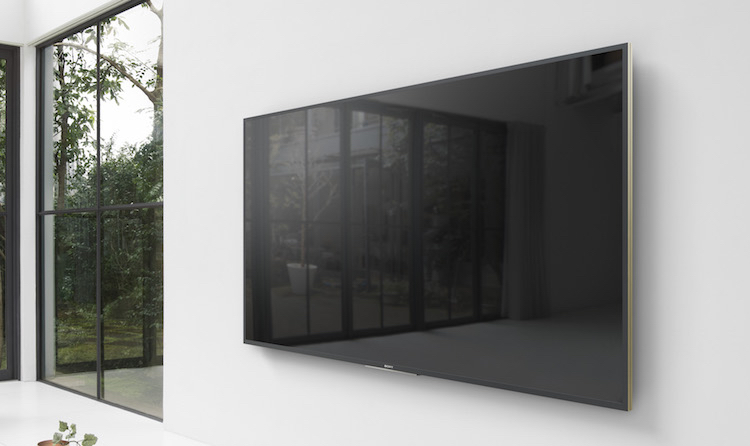
From the moment we laid eyes on the the XBR-65Z9D we’ve been desperate to get our hands on one. It is, hands down, the holy grail of television for 2018: a TV able to combine the extreme, high dynamic range-friendly brightness of LCD technology with a backlight arrangement capable of getting LCD closer than ever before to the stunning light control you get with OLED technology.
This backlight arrangement comprises more than 600 LEDs that sit behind the 65Z9D’s screen that are capable of outputting their own light levels independently of their neighbors. This should enable the TV to produce more of the extremes of light and shade associated with new high dynamic range (HDR) technology while suffering less than other LCD TVs with distracting clouds, stripes or halos of unwanted, extraneous light.
As if this wasn’t already attraction enough, the 65Z9D also sports Sony’s new ‘X1 Extreme’ video processing system and the latest version of Sony’s reliable Triluminos wide color technology for unlocking the extended color spectrums associated with HDR sources.

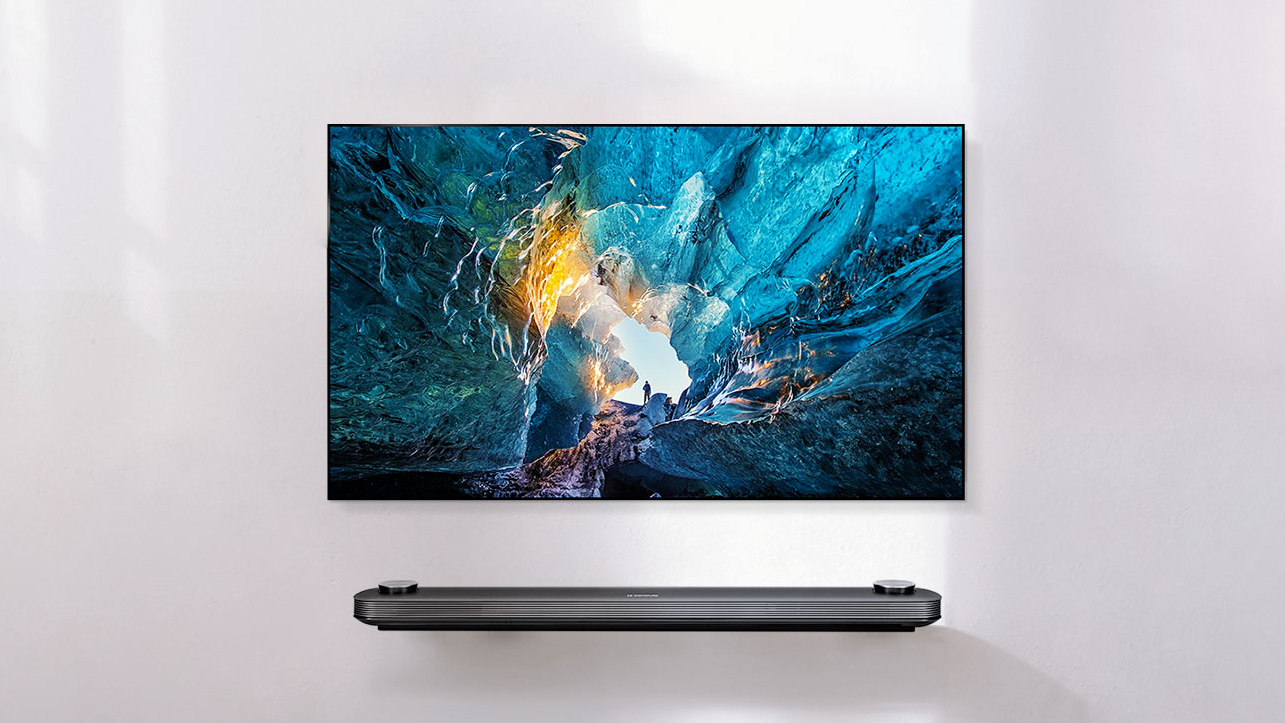
The LG W7 OLED is truly something special. Not only is it one of the thinnest TVs to ever grace our vision (it’s 2.75mm thin), but it’s also one of the most gorgeous. When fed the right kind of content – in this case, 4K HDR10 or Dolby Vision video – it truly shines. A super-slim design alone wouldn’t have been enough to warrant the extra cost to upgrade to LG’s latest panel. But the thin frame on top of a Dolby Atmos soundbar on top of four types of HDR support on top of the magnetic mounting system on top of the new webOS 3.5 operating system surely did the trick. This incredibly gorgeous TV isn’t without its faults (see: motion handling, its sticker price and soundbar issues), but in terms of sheer picture performance there’s nothing else like it right now.

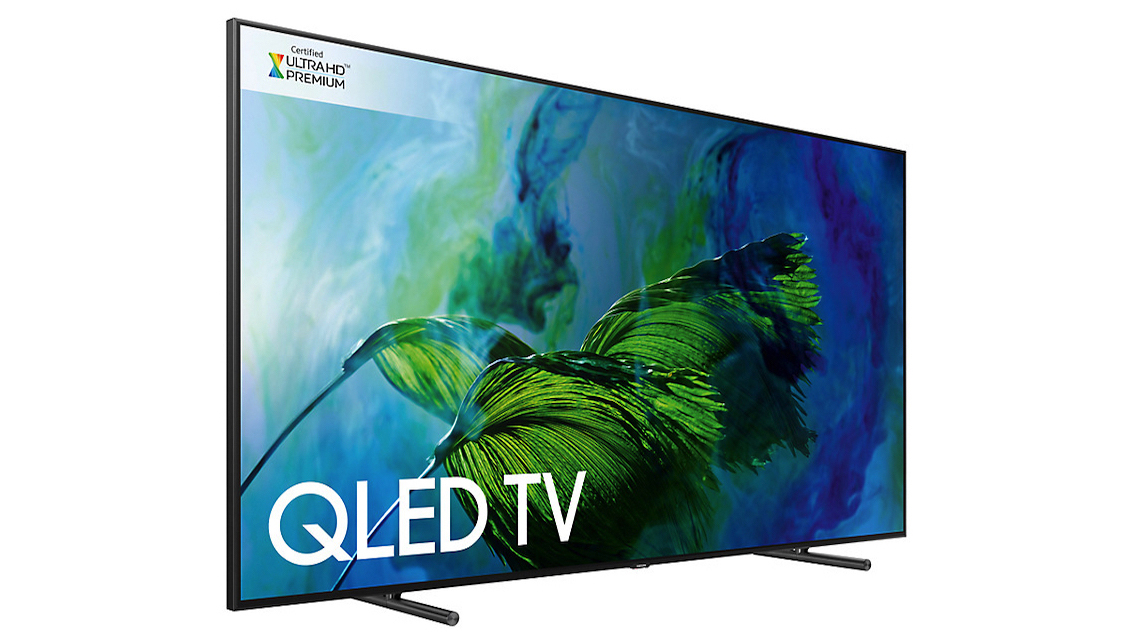
It looks like someone on Samsung’s TV design team has been watching 2001: A Space Odyssey. The 65-inch Q9 is a ringer for that film’s mysterious black monolith thanks to the way both its front and back sides are completely flat and feature ultra-robust, polished finishes. Ultra HD HDR playback is what the Q9F was created to do and, given Samsung’s potent HDR track record, it's no surprise to find that it does it supremely well. Even though the Q9F has 4K HDR optimisation in its DNA, it’s capable of looking seriously good with high definition standard dynamic range content too.


If LG's OLED isn't your thing, spend some time checking out Sony's new OLED.
The 55A1 – and the A1 OLED series overall – are crowd pleasers in just about every way. Their ‘picture only’ design has been beautifully realized, managing to be simultaneously subtle and dramatic. Their vibrating screen delivers a far more powerful and effective sound performance than I’d thought possible, too. The real stars of the show here, though, are the A1’s exquisitely detailed, contrast-rich and colorful pictures. These prove emphatically what we’ve long suspected: More brands using OLED technology can only lead to good things.

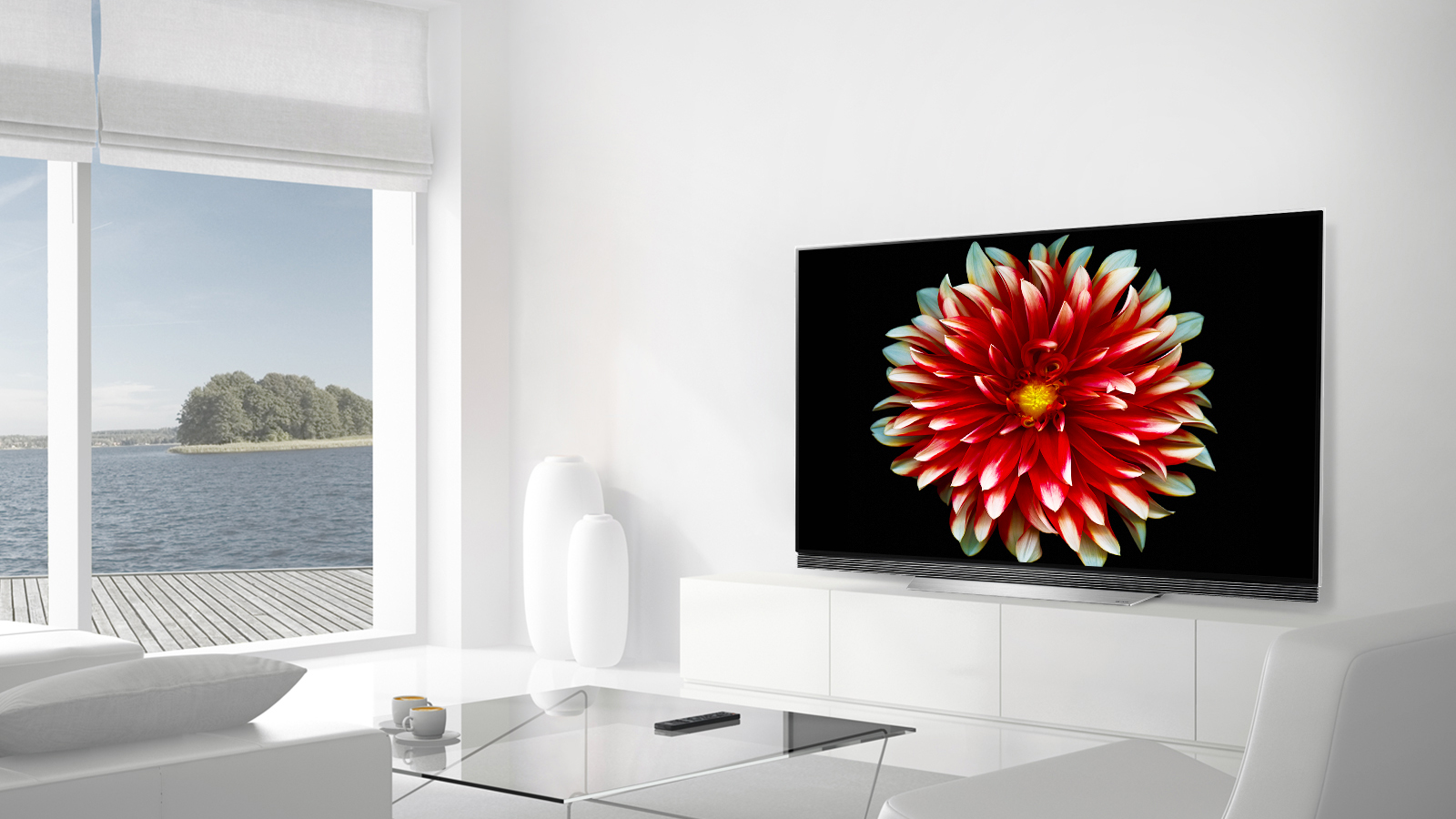
After kickstarting its 2017 OLED campaign with the sensational-but-expensive OLED W7, LG is now following that up with something rather more affordable. Picking the more affordable option means you have to forego the W7’s incredibly thin and flexible screen, as well as its external control box and speaker system. However, the OLED E7 still looks like a million bucks, still boasts an integrated soundbar that claims Dolby Atmos support, still boasts LG’s excellent webOS smart system, and still, most importantly of all, delivers pretty much identical picture quality to its more expensive sibling. For all those reasons and more, the E7 OLED is a worthwhile addition to any home theater.

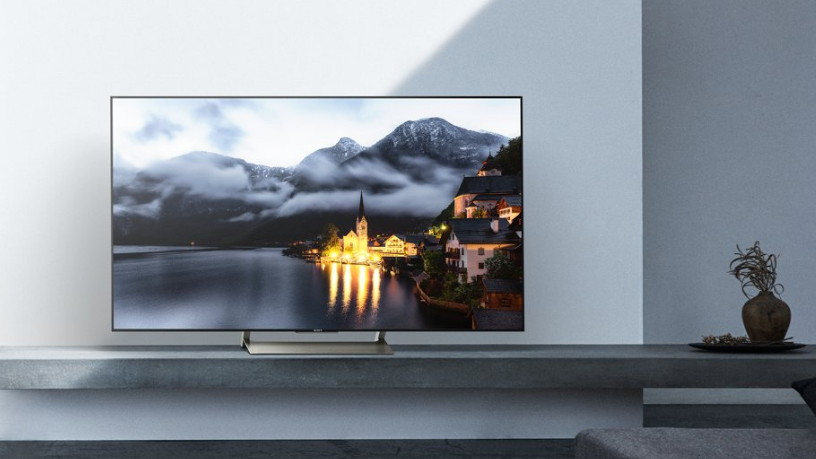
OK, so you don't want Sony's new A1E OLED or the fantastic-but-pricey ZD9. So what should you buy? Check out the X900E series. With superb 4K image clarity, powerful SDR-to-HDR remastering, and a smooth direct LED backlight, Sony is offering something very different with the X900E. We loved the consistency of its images, the eye-popping vibrancy of its wide color gamut panel and its easy-to-watch HDR – you get spectral highlights without accompanying eye fatigue.
Given this set’s high-but-fair price point, any niggles we have are negligible. The X900E is highly recommended and deserved our Best in Class award.


We've already recommended a couple of different OLED sets on this list, and the B7 is the most affordable of the bunch.
But rather than compromising on that glorious panel to hit a more wallet-friendly price point, LG has instead compromised on sound.
This puts the LG B7 in a slightly weird situation audio-wise. It technically supports Dolby Atmos, but played through its mediocre downward-firing speakers the technology lacks most of what makes it impressive.
Thankfully you're of course able to plug in an external sound system, and we'd advise you to do.
If that's something you're prepared to do then you'll find the B7 has every bit the talent of its more expensive siblings at a fraction of the cost.
Read the full review: LG OLED B7

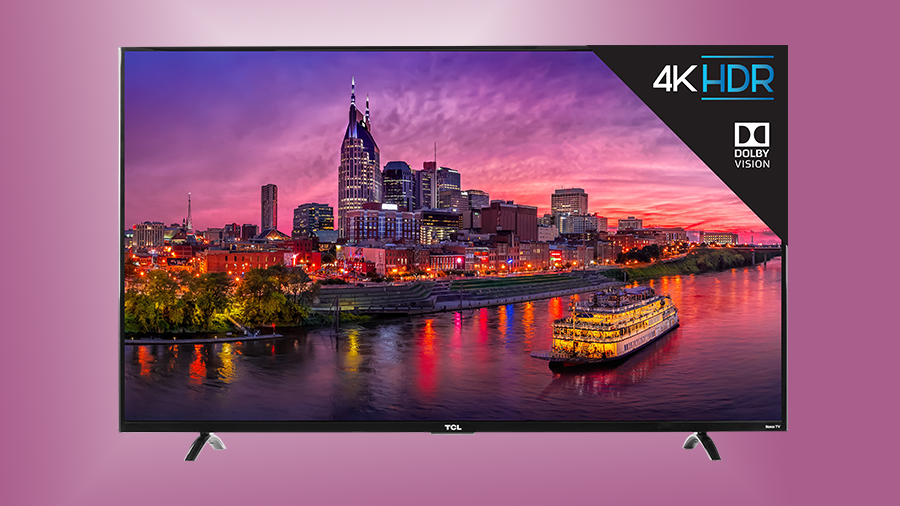
TV manufacturers have long sought the formula to a great performing TV at a bargain price and, speaking for the last seven years since LED LCD hit the mainstream, have never quite achieved that perfect balance. Until now.
For us, TCL’s P-Series 55P607 does just that – it packs powerful technology under the hood, including support for WCG and Dolby Vision, in an affordable package that will only get cheaper once the seasonal sales start in November.
If you like your TVs bright, colorful and well-stocked with the latest display technologies, the TCL P-Series 55P607 should be at the top of your list.
Read the full review: TCL P-Series (55P607)

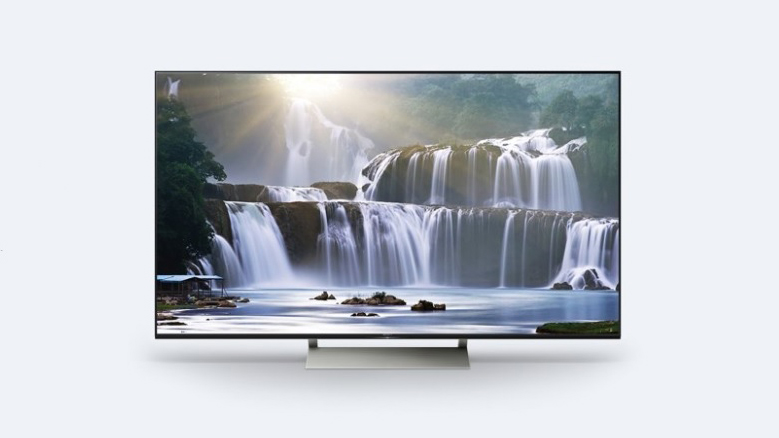
While this monstrous 75-inch size TV will likely be too much for many households to handle, the Sony 75X940E is hands down one of the best new LCD TV of the year. Its combination of outstanding contrast, gorgeously rich but also subtle colors and impeccable sharpness and motion handling works wonders with HDR and SDR alike. It’s surprisingly elegant for such a large TV, too.
Perhaps best of all, though, its sub-$4,500 price looks like something of a steal when you consider that you’re really buying a high quality home cinema display rather than a mere TV. It comes highly recommended with our seal of approval.
Read the full review: Sony Bravia XBR-75X940E
Continue on to page two to read about what to look for when buying a TV!
- Are you looking for the best universal remote for your new home theater setup?
What TV technology is best? Which is the best LCD TV? Which screen size is best for your living room? What's the difference between LCD and LED TVs?
The answers aren't always obvious. In fact, buying a new TV can be stressful even for the tech-savvy - there are so many brands, so many features, so many screen sizes, colors, technologies and flavors to choose from.
So which one is right for you, your family and your living space? In this guide, we'll walk you through everything you need to know about buying a new TV.
What types of TV are there out there?
There are a lot of different screen types out there, all working in different ways to produce the same results. Each technology has its own unique strengths and weaknesses so here are some basics to consider:
LCD TV: CCFL
Until recently, all LCD TVs were backlit by always-on, CCFL (cold cathode fluorescent) lamps. This ageing technology has been superseded by the superior LED method on more expensive sets, but is still standard on some cheaper models.
LED TV: Direct LED
These displays are backlit by an array of LEDs (light emitting diodes) directly behind the screen. This enables localised dimming – meaning immediately adjacent areas of brightness and darkness can be displayed more effectively – and greatly improves contrast. LED TVs are also more power efficient and capable of a wider colour gamut than CCFL sets. Because of the extreme cost of mounting these arrays of LEDs, Direct LED TVs have largely been out muscled by Edge LED...
LED TV: Edge LED
With these TVs, LEDs of the backlight are mounted along the edges of the panel. This arrangement enables radically slender displays and offers superior contrast levels to CCFL, but can't achieve the same picture quality as directly lit LED sets. However, they do come in far cheaper which is why most LED TVs out there now use this technology.
OLED TV
The backlighting on OLED (organic light emitting diode) sets is achieved by passing an electric current through an emissive, electroluminescent film. This technique produces far better colours and higher contrast and also enables screens to be extremely thin and flexible. This is the holy grail display technology and only in 2014 did a bigscreen OLED TV go on sale. So it's new, it's expensive and the top brands are still struggling to get their heads around it. To date, only LG has been able to release full sized OLED TVs.

Quantum Dot
As yet we're not quite at the stage where we're going to get self-emitting quantum dot LEDs, but they're a-coming. What we do have though is Samsung producing its Nanocrystal filter based on quantum dot technology to produce a seriously improved colour palette and contrast levels that get mighty close to the pinnacle of OLED.
Plasma TV
PDP (plasma display panel) TVs use glass panels containing millions of tiny cells filled with a mixture of inert gases. Electricity excites the gases, causing them to illuminate the pixels across the screen. Plasma, while arguably superior to LCD in terms of contrast and colour accuracy, is only viable on large (42in+) screens and has been dropped by all but a handful of manufacturers. You'll be lucky to find one on the shelves these days.
Curved TV
Some manufacturers are now making TVs that have slightly curved screens. But unlike old CRT TVs, the curve is inwards rather than outwards. The idea is that this makes every pixel equidistant from your eyes, delivering a more satisfying picture. However, there are drawbacks for this type of screen - the main one being that if you sit far enough to one side – more than 40 degrees or so – the curve clearly starts to affect the image's geometry, foreshortening content near to you and compressing the image's centre.
What resolution tech should I go for?
HD
HD TVs come in two resolutions. Sets with the HD ready are required to be able to display a minimum 720p picture, and generally has a screen resolution of 1366 x 768 pixels. Meanwhile, Full HD TVs have a higher resolution of 1920 x 1080 pixels. It's highly advisable that you don't go for anything less than full HD in this day and age.
Ultra HD and 4K
The resolution of Ultra HD is exactly four times higher than full HD - 3840 x 2160. It means a far more detailed picture, with content requiring a lot more bandwidth and storage space. 4K TVs tend to be good at upscaling HD video to Ultra HD but there are currently very few options for watching native 4K content. Read more about 4K.
HDR
Potentially the next big thing in TVs, HDR produces astounding levels of visual fidelity and can be found in some of the latest Ultra HD TVs. Arguably the shift to HDR video could make a more dramatic difference to your viewing experience than moving from HD to 4K. Like still HDR images, the moving version expands the range of both the light and dark ends of spectrum, providing more detail for both. HDR needs new filming methods though - at the moment there is no way to backfill HDR into existing video. It also needs new TV tech too, with Samsung the only ones to create specific screens, though LG and Sony are going be able to update some of their existing stock to be compatible.
What else should I consider?
Buying a flatscreen television is a major investment and one that you can't afford to take lightly. Just popping into the closest store and grabbing the first plasma or LCD you see won't get you the best deal, the screen that suits your needs, or the gear you require to make the most of your new purchase.
Size matters
People tend to pick the size of their flat TV based on the amount of space they have for it, this isn't necessarily wise. Flat TVs take up much less space than you might think, so your new TV may end up a foot or two further away from your viewing position, making the picture appear smaller.
Also, with hi-def, you can have a bigger screen and the same viewing distance without worrying about seeing blemishes inherent to the source. HDTV's lack of noise means that the ideal distance to sit from the screen is three to four times the height of the TV.
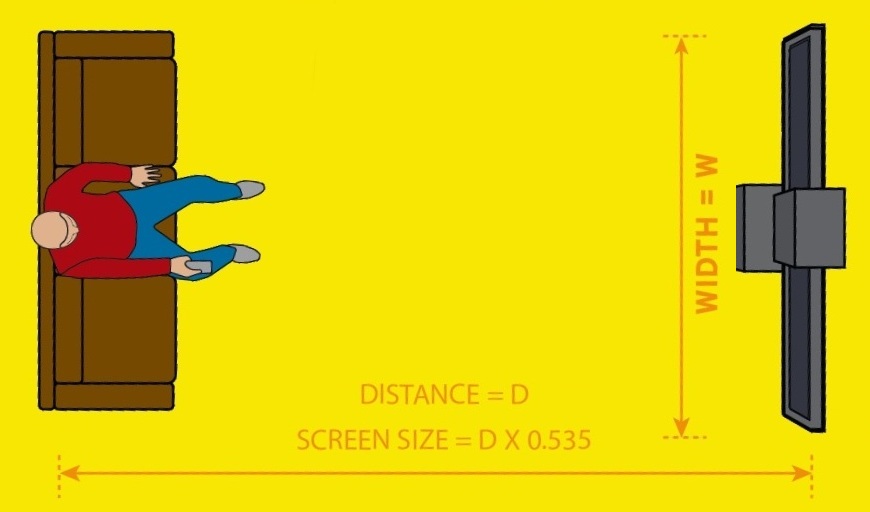
How to calculate the right size HD TV:
The trick here is to ensure that your TV is big enough to fill your line of vision, but small enough to be sharp and clear. Remember, if you intend to only watch standard-definition sources, the bigger the screen gets, the worse the image will look.
The ideal screen size can be calculated by multiplying the distance that you intend to sit away from it by 0.535 and then rounding this up to the nearest size.
So, if you sit 80in away from your TV, the ideal size is 42-inch (80 x 0.535= 42.8).
What features should I look out for?
Features are too numerous to go into here, but here are some things you should consider.
Photo viewing: If you have a digital camera, a TV that has a slot for memory cards or a USB socket for a card reader will let you view your photos onscreen.
Here are some of the things we look for when we review a screen, so you should, too...
Contrast: Bright whites shouldn't have any signs of green, pink or blue in them, while blacks should look solid and not washed out, grey, green or blue.
Colours: Look at how bright and solid they are; how noiseless their edges are; how 'dotty' richly saturated areas are and how natural skin looks, especially in dim scenes.
Fine detail: How much texture does the screen give? Does a tree look like a green lump, or can you see the individual leaves
Edges: Check for ghosting, bright halos and jaggedness, especially around curves.
Motion: Check moving objects and quick camera pans for smearing or blurring, trailing, jerkiness and fizzing dotty noise.
Image artefacts: Look for blockiness, colour bands, grain, smearing, dot crawl: anything that looks like it's added by the TV picture processing or a weak TV tuner. Tinker with a TV's picture settings before making a final decision. Factory settings are rarely good for everyday viewing.

What about sound?
To provide the best audio to complement the pictures, your TV should be hooked up to a surround sound system, but this isn't always an option. So, here's what we listen for when testing a TV's speakers:
Bass: Deep, rounded rumbles that don't cause the set to rattle or speakers to distort, cramp or overwhelm the rest of the sound; but that expand when needed.
Vocals: Voices should sound open, rich and clear, not boxed in, nasal or thin.
Trebles: Treble effects should sound clean, rounded and smooth in loud scenes and shouldn't dominate the soundstage.
Soundstage width/depth: A good TV should throw the sound away from the TV, to the sides, forward and back, to give an extra dimension to what's on screen, without losing any coherence.
Questions to ask before you buy
Taking the time to consider these questions will make choosing the best TV easier...
HD or 4K?
4K TVs are stunning and even though there is currently little native 4K content to enjoy, the good ones are able to upscale HD to 4K very well. That being said, unless you're buying a very large TV - we're talking 65-inches plus - full HD should be adequate.
What size do I need?
This is dictated by the dimensions of the room where the TV is going and the amount of cash you're prepared to spend. As a general rule of thumb, work out how far from the set you'll be sitting (in inches), multiply that distance by 0.535 and then round up the result to the nearest screen size. Bear in mind that a decent smaller telly is often a more sensible investment than a larger, less accomplished one. And if you're going to buy a 4K TV, you can sit much closer because of the higher resolution.
How many HDMI sockets do I need?
For a living room TV you should be looking for a minimum of 3 HDMI inputs. If you want to attach a set-top box as well as games consoles etc, those HDMI ports will fill up fast.
Can I connect my older, analogue kit?
Most new sets carry no more than two composite connections, while S-video is fast approaching obsolescence. Check that your new TV can hook up to older digiboxes, VCRs or DVD decks that you might want to plug into it.
Do I want to hang my TV on the wall?
First off, you'll need to consult a construction expert to check that the wall in question is strong enough to support a flatscreen. Then find out if the set you want is designed to be wall-mounted and, if so, ask if the relevant bracket is included in the basic package or as an optional extra.
Will I be connecting it to a home cinema?
If the answer is no, you might want to think more carefully about your set's audio performance. Look for a screen that can go as loud as you'll need without distortion or cabinet rattle. Consider how dialogue sounds and how much low-end rumble the bass is capable of.
Conversely, it's pointless paying out more cash for exceptional built-in speakers if you already have a decent home cinema system.
Happy shopping!
Contributer : Techradar - All the latest technology news http://ift.tt/2jdHCqF

 Reviewed by mimisabreena
on
Wednesday, February 21, 2018
Rating:
Reviewed by mimisabreena
on
Wednesday, February 21, 2018
Rating:















No comments:
Post a Comment